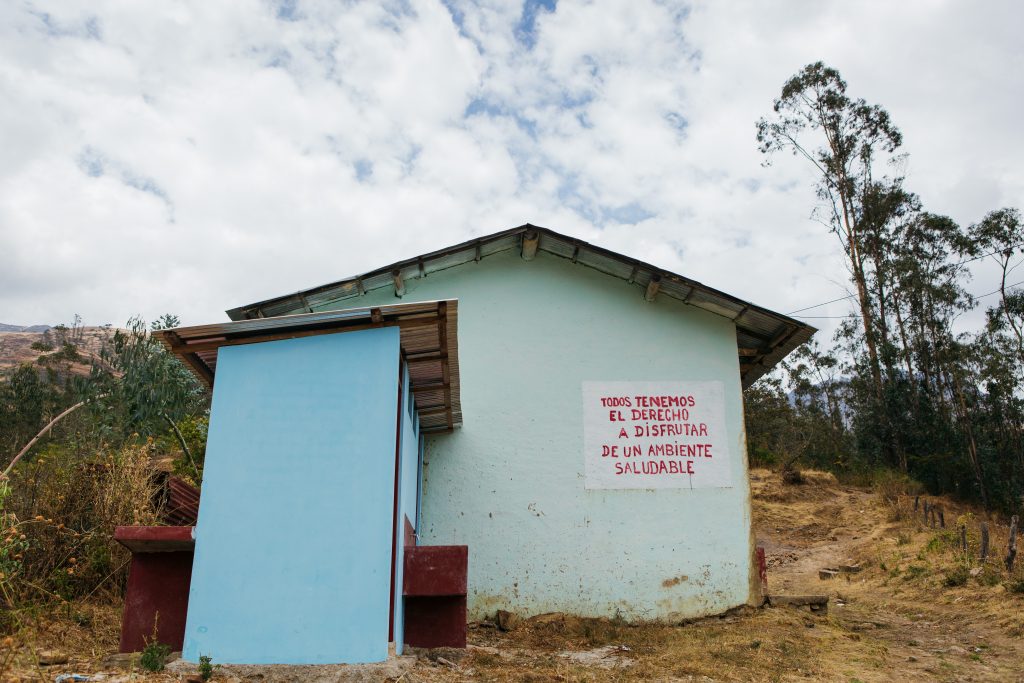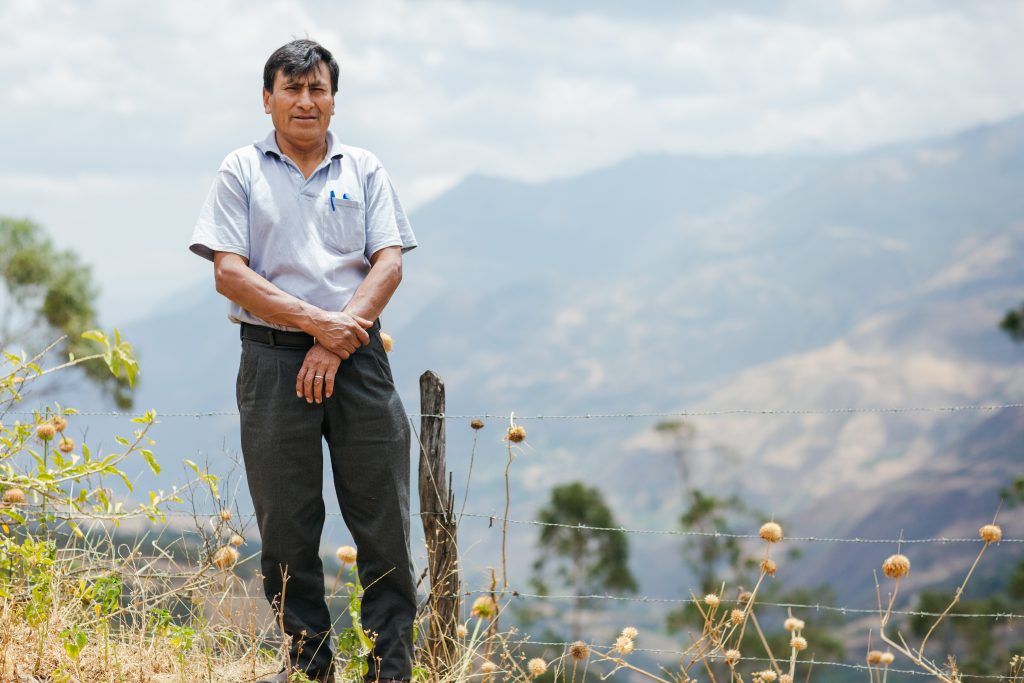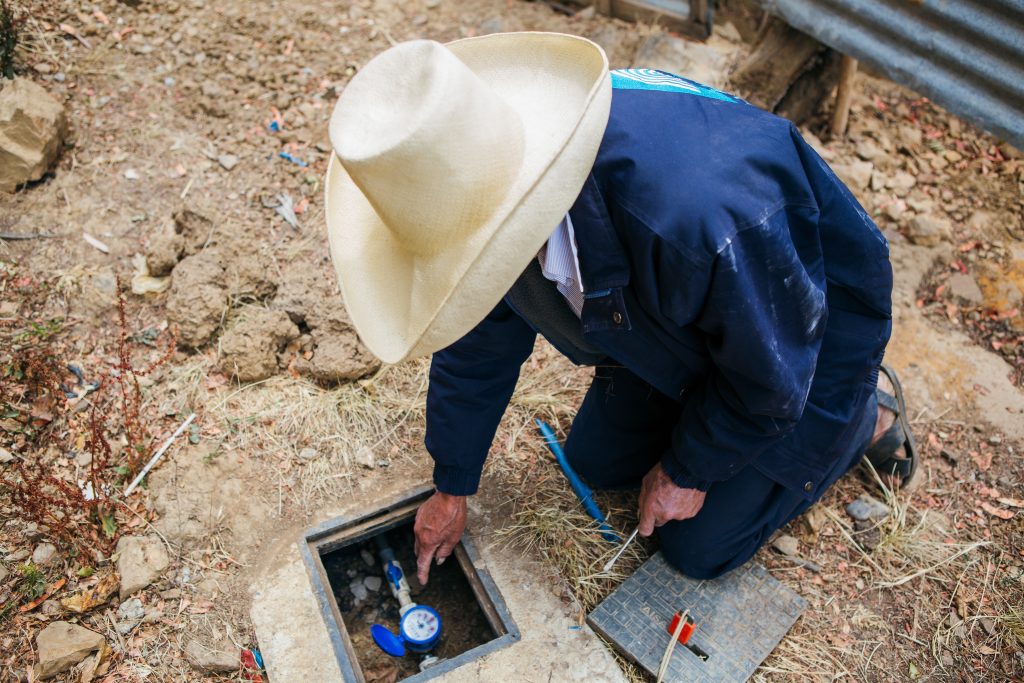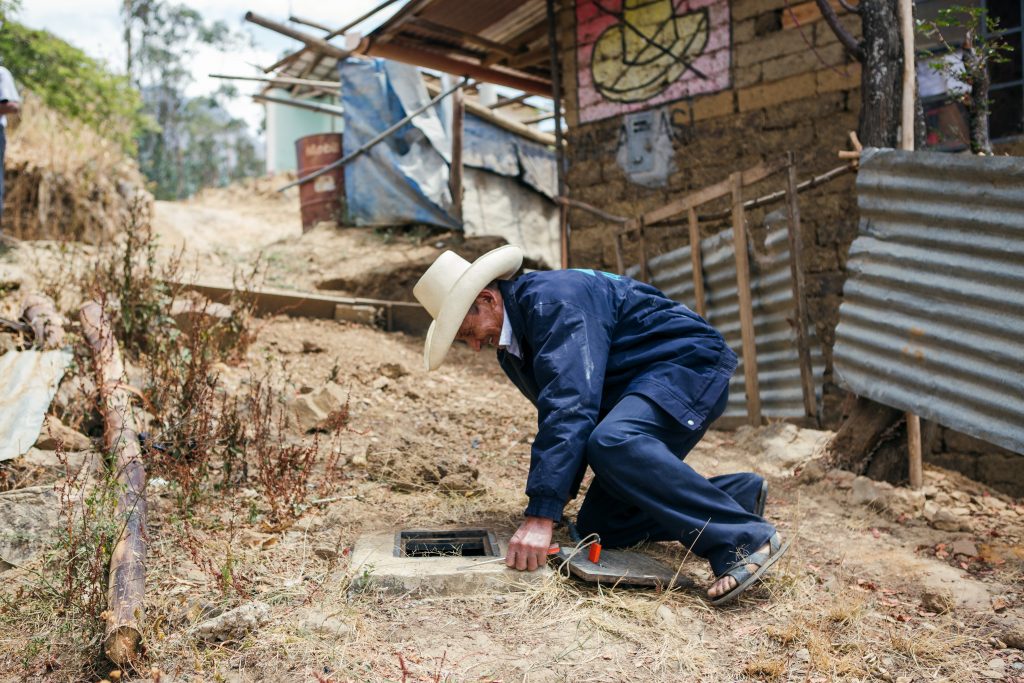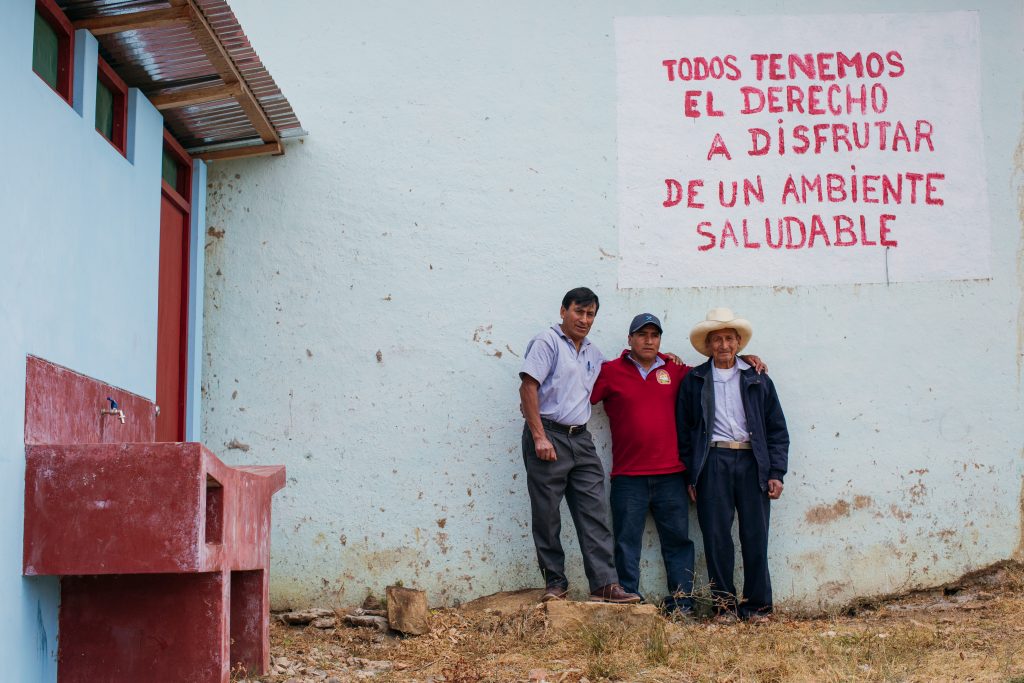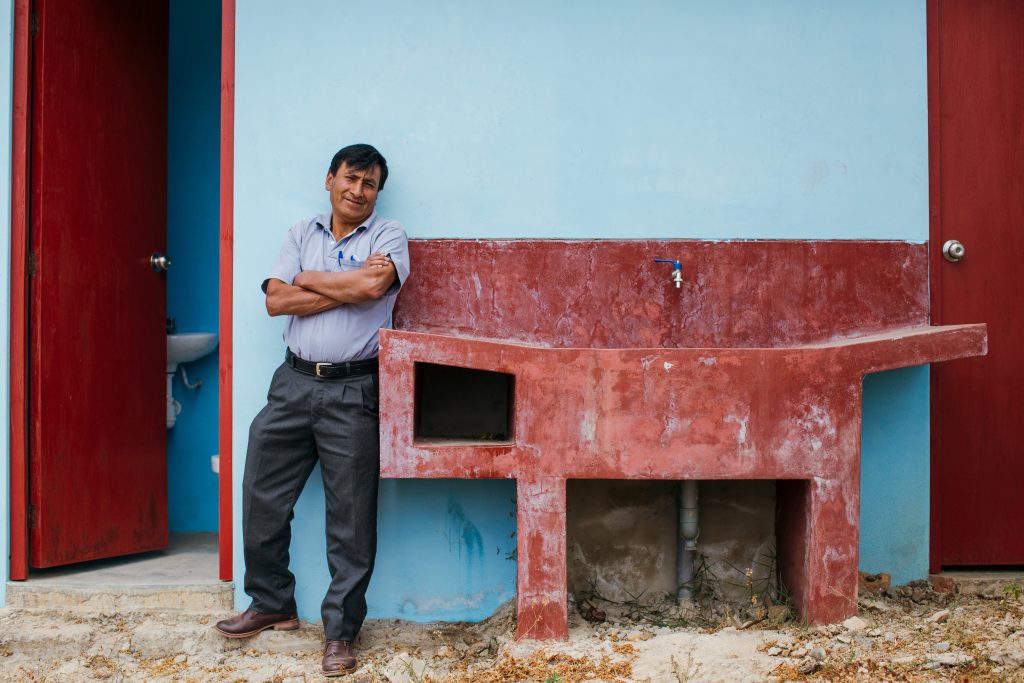In the small community of Llimbe (Asunción) in Peru, water sources were drying up. The population had grown from 35 to 50 families, and some of the families were using more water than they really needed. Because of this, if you lived further up the slope, you might only have water for an hour a day.
"In the dry season, the water level always decreased," says Fausto Cotrina, president of the community's Sanitation Services Administrative Board (JASS).
Llimbe needed a solution that would help protect its water resources and ensure everyone in the community had enough water every day. The idea proposed by the JASS was to install micrometers to the water connection of each home. The micrometers would measure a family's water use and ensure they are adequately supplied, thus encouraging water conservation and ensuring that Llimbe's 50 families had the water they needed.
But community members weren't so sure.
"It was difficult to convince families to use micrometers," says Fausto. "Families were really afraid that if we put in micrometers they would pay more for water."
Most families in Llimbe have small plots of land to grow crops and raise animals, and earn approximately $2 (dollars) per day. Their fear of paying more made sense, but JASS wanted to educate them on how water conservation and setting an appropriate rate could boost their financial situation. They would have water to irrigate their crops and improve production, and at the same time they would improve the health and hygiene of their families by having enough water for drinking and bathing. Setting an appropriate rate would also ensure that your water system was sustainable in the long term by providing money for repairs.
Llimbe made the decision to vote, and those in favor of installing micrometers won.
Fifteen days later, the installation of the micrometers was completed, and in the first month everyone saw the benefit.
"We had a community meeting, and everyone realized how the micrometers were affecting the amount of water they were using," says Fausto. "They were surprised that by using micrometers, they were saving water and the water supply was sufficient."
Why micromeasurement?
Sometimes the simplest solutions are the best. Micrometers are cheap. They are globally accessible. People understand their purpose and they are one of the keys to providing water service that will achieve Full Coverage Forever.
In Latin America, Water For People used to support work on non-micrometering water systems. Each family would be charged a fixed rate for water consumption, regardless of the amount of water used. This created a large disparity in domestic use, and some families used much more water than was covered by the monthly rate, causing cuts in water services – to entire communities – when water resources were depleted. It was clear that measuring usage was the way to go.
With micrometering, families are encouraged to use only the water they need, which promotes water conservation, and assists in the management of water resources. They pay exactly for what they use, providing the financial resources necessary to maintain a water system over the long term, as it will eventually need repairs. By promoting water resource management and financial management, these tiny meters are a great piece of ensuring water is there “Forever.”

